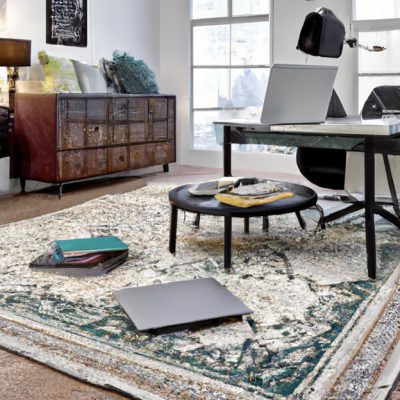Exploring Aboriginal rugs guide, Basket weaving and Pituri, Property flooring advice, Floor space visual appeal
Exploring Aboriginal Rugs Guide
16 April 2024
Aboriginal rugs are colourful floor coverings with a wealth of meaning and narrative. The artistic legacy, ancestry, and connection to Australia’s people are embodied in each design. Let’s explore what the rugs have to offer.
Revealing the Traditions of Weaving
Aboriginal rugs have a long history, and different techniques are used in weaving. Here’s an overview of some of the popular methods:
· Basket Weaving
Techniques used in basket weaving extend to Aboriginal rug making, with local populations using natural grasses and reeds to create beautiful, durable floor coverings.
· Pituri
This South Australian approach weaves complex geometric designs using plant materials such as spinifex grass and natural dyes. The end product is rugs renowned for their earthy hues and portrayals of the terrain.
Contemporary Techniques
Aboriginal artisans push the envelope by utilising modern materials in their weaving techniques, such as acrylic yarn and synthetic fibres. This preserves the tradition while enabling more vibrant hues and intricate designs.
· Hooked Rugs
This pan-Australian method uses a hooked instrument to pull wool yarn through a burlap substrate. Designs frequently feature imagery from ceremonies, dreamtime tales, and animals.
· Coil Weaving
Aboriginal women from Central and Western Australia are skilled in the unique craft of coiling natural fibres like grass and painted reeds to produce geometric designs and symbolic depictions.
Examining the Symbolism
Aboriginal rug designs are windows into the rich cultural tapestry of First Nations Australians. Here is an overview of some of the symbolic aspects you may come across in the design.
Geometric Shapes:
In most cultures, lines, circles, and other geometric shapes can stand in for important symbols, ceremonial artefacts, or landscapes.
Tjukurrpa: This creative belief system is displayed through landscapes, old tales, and images of ancestral beings.
Dot Work: This widely used design makes elaborate patterns out of tiny dots, frequently depicting constellations, campsites, and ancestor voyages.
Animals: Animal representations have profound symbolic importance; they represent spiritual values, totemic relationships, and the interdependence of nature. Typical themes include snakes, kookaburras, emus, and kangaroos.
Ethical Considerations for Investing in Authenticity
The rug market is full of rip-offs. Here are some guidelines to make sure you’re purchasing genuine Aboriginal artwork.
Ask Questions: Talk to respectable dealers or galleries who can tell you more about the weaver, the origin, and the artist behind the rug.
Provenance: Find carpets with provenance records and details on the maker or group of makers.
Authenticity Certificates: Look for rugs with certificates attesting to their provenance and cultural significance.
Indigenous-Owned Businesses: Encourage the patronage of Aboriginal-owned companies and art centres to ensure that the artists and their communities directly benefit from the earnings.
Taking Care of Your Native Rug:
Native American carpets are priceless items that require careful maintenance. Here are some pointers to guarantee their durability.
Protection against Sunlight
The brilliant colours of the rug may fade in direct sunlight. Place it where there is indirect lighting.
Frequently Vacuuming
Use your vacuum cleaner’s soft brush attachment to get rid of dust and debris.
Expert Cleaning
When it comes to deep cleaning, consider hiring experts who have previously dealt with fragile Aboriginal fabrics.
Spot Cleaning
Use a moist cloth soaked in a mild soap solution to clean up small spills. Steer clear of harsh chemicals and too much wetness.
Examining Aboriginal Art’s Richness
Learning more about Aboriginal rugs can lead to a deeper exploration of the art. Think about visiting galleries that display traditional and modern Aboriginal artwork in various media, including paintings, sculptures, and artefacts. Aboriginal culture and customs can also be expressed in cultural events and festivals.
Aboriginal rugs are powerful representations of a dynamic culture rather than merely ornamental items. You’re not just decorating your house but also taking a step towards cultural exploration. Explore Aboriginal art and enhance your space with an attractive rug.
Comments on this Exploring Aboriginal Rugs: A Comprehensive Guide article are welcome.
Rugs
Rugs Posts
How To Decorate Your Home With Rugs
Rugs in interior design: ways to uplift a room
4 most effective ways to clean rugs at home
Building Articles
Residential Architecture
New National Centre For Music Edinburgh
JAX 01 Exhibition Space, Saudi Arabia
Comments / photos for the Exploring Aboriginal Rugs: A Comprehensive Guide page welcome








